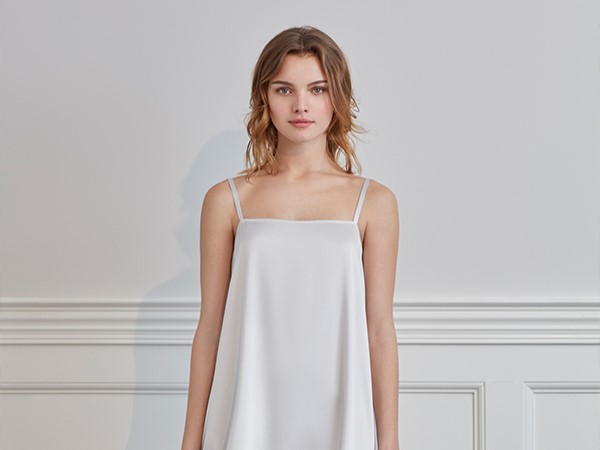
We invest significant time and resources into our nightly rituals. We meticulously apply serums, eye creams, and hydrating masks, all in the pursuit of waking up refreshed and radiant. But what if the very surfaces we spend eight hours on are actively undermining those efforts?
We’ve optimized our nutrition, our exercise, and our skincare, yet many of us overlook the most intimate part of our environment: our sleep fabrics. The materials we sleep on and in are not passive players; they are active participants in our nightly restoration. They can either be a powerful ally for our skin, hair, and sleep quality, or they can be a source of friction, dehydration, and disruption.
It’s time to look beyond the bathroom counter and consider the textiles that make up our sleep sanctuary.
The Nightly Sabotage: Friction and Dehydration
Think about your typical bedding. Materials like cotton, while popular, have two significant drawbacks: they are highly absorbent, and they create a high-friction surface.
For your skin, this is a dual-pronged problem. First, that absorbency means your expensive night creams and natural facial oils are being wicked away from your skin and drawn into your pillowcase. You’re essentially moisturizing your bedding instead of your face. This can lead to increased transepidermal water loss, leaving your skin feeling dehydrated and tight by morning.
Second, the friction from these fibers tugs at delicate facial skin as you move during the night. This friction is the primary culprit behind “sleep creases”—those temporary lines you wake up with that, over time, can contribute to the formation of permanent wrinkles. For individuals with sensitive skin or conditions like acne, this constant rubbing can also cause irritation and inflammation.
This same friction wreaks havoc on your hair. The coarser texture of many common fabrics grips and pulls at hair strands, leading to tangles, frizz, and—most damaging of all—breakage. You might wake up wondering why your hair feels dry and brittle despite using masks and oils, never realizing your pillowcase is the offender.
Upgrading Your Sleep Surface: From Passive to Active
The solution lies in choosing fabrics that work with your skin and hair, not against them. This means prioritizing materials that are smooth, non-absorbent, and breathable.
When you switch to a low-friction surface, you fundamentally change your nightly environment. Smooth fibers allow your skin and hair to glide across the surface instead of being pulled or snagged. This simple change dramatically reduces the mechanical stress that causes sleep creases and hair breakage.
Furthermore, fabrics with low absorbency, such as high-quality silk, help your skin retain its natural moisture and keep your skincare products where they belong. The tightly-woven, protein-based fibers don’t act like a sponge. Instead, they support your skin’s hydration barrier.
This is why investing in a complete set of high-quality silk bed sheets can be transformative. It’s not just an act of indulgence; it’s a functional upgrade. You are turning your bed from a passive piece of furniture into an active tool that supports your body’s nightly repair cycle.
Your “Second Skin”: Sleepwear and Temperature Regulation
While your bedding addresses the skin-and-hair interface, we can’t ignore the fabrics you wear. Your sleepwear is your “second skin,” and its most critical job is to help you thermoregulate.
Deep, restorative sleep is inextricably linked to body temperature. To fall asleep and stay asleep, your core body temperature needs to drop slightly. Many fabrics disrupt this delicate process. Cotton, for instance, is breathable until it gets damp; it then holds onto moisture, becoming cold and clammy. Synthetic fabrics, on the other hand, often trap heat and don’t breathe, causing you to overheat and wake up.
This is where the right sleepwear becomes essential. Materials that are both breathable and moisture-wicking help manage your body’s microclimate. They pull moisture away from your skin but don’t hold onto it, allowing it to evaporate so you stay dry and comfortable. This prevents the “too hot, too cold” cycle that fragments your sleep and pulls you out of deep REM stages.
This is why choosing the right sleepwear, such as high-quality women’s pajama sets designed for comfort and breathability, is just as important as your environmental controls. For those with sensitive skin, eczema, or body acne, a smooth, non-irritating fabric can also mean the difference between a restful night and one spent battling itchiness and irritation.
A 360-Degree Approach to Restorative Sleep
Your nightly restoration is an ecosystem. Your skincare, your hydration, your room temperature, and your fabrics are all interconnected. You can have the best mattress and the most expensive serum, but if your sheets and pajamas are causing friction and disrupting your temperature, you are missing the final, crucial piece of the puzzle.
Stop letting your self-care routine end at the bathroom sink. Extend that same conscious care to the fabrics that envelop your body for a third of your life. By choosing materials that support hydration, minimize friction, and promote thermal balance, you ensure that every hour you spend in bed is an hour spent in active, truly restorative recovery.




